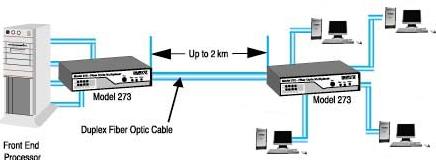-

- Sopto Home
-

- Special Topic
-

- Fiber Optics knowledge
-

- How does Fiber Optic Cable Transmit Data?
Fiber Optics knowledge
- Maintained Methods of Fusion Splicer Parts
- How to Use the Fiber Optic Cleaver?
- What are Fixed Attenuators & Variable Attenuators?
- Deployable Fiber Optic Systems for Harsh Mining Environments
- Developing Miniature Fiber Optic Cable Has Become the Trend
- Fiber Optic Cleaning Procedures
- 6 Steps to Selecting a Fiber Optic Cable
- Signal Attenuation Introduction
- How Fiber Transmission Works?
SOPTO Special Topic
Certificate



Guarantee
Except products belongs to Bargain Shop section, all products are warranted by SOPTO only to purchasers for resale or for use in business or original equipment manufacturer, against defects in workmanship or materials under normal use (consumables, normal tear and wear excluded) for one year after date of purchase from SOPTO, unless otherwise stated...
Return Policies
Defective products will be accepted for exchange, at our discretion, within 14 days from receipt. Buyer might be requested to return the defective products to SOPTO for verification or authorized service location, as SOPTO designated, shipping costs prepaid. .....
Applications
Fiber Optis can be used in so many fields:
Data Storage Equipment
Interconnects,Networking
Gigabit Ethernet
FTTx, HDTV,CATV
Aerospace & Avionics
Data Transfer Tests
Network Equipment
Broadcast Automotive
Electronics,Sensing
Oil & Gas, Imaging
Outside Plant,Central Office
Harsh Environment
Data Transmission
Illumination,Institutions
Ship to Shore,Education
Simulation,Military,Space
Unmanned Aerial Vehicles
Semiconductor Equipment
Diagnostics & Troubleshooting
Premise Networks Carrier Networks
Independent Telecommunication Providers
SOPTO Products
- Fiber Optic Transceiver Module
- High Speed Cable
- Fiber Optical Cable
- Fiber Optical Patch Cords
- Splitter CWDM DWDM
- PON Solution
- FTTH Box ODF Closure
- PCI-E Network Card
- Network Cables
- Fiber Optical Adapter
- Fiber Optical Attenuator
- Fiber Media Converter
- PDH Multiplexers
- Protocol Converter
- Digital Video Multiplexer
- Fiber Optical Tools
- Compatible
Performance Feature
Fiber Optics knowledge
Recommended


How does Fiber Optic Cable Transmit Data?
Fiber optics are plastic tubing filled with thin glass filaments which carry data in the form of light across a network. The basic of fiber optics consists of speed, distance, resistance and bandwidth. Fiber optic cables function at gigabit speeds. Their bandwidth is larger than standard CAT5 networks. Fiber optics are able to transmit data without worry of signal loss and they offer a great resistance to interference such as radios or electromagnets.
Fiber optic cables use pulses of light and send them through a transmitter across thin filaments of fiber. The transmitter can interpret electronic information and turn it into pulses of light which are then sent through the fibers using a lens. Light passes through the fibers and bounces from the inside of the glass tubing until it reaches its destination. At the end, it is received and interpreted as electronic information.

Fiber Optic between Devices
There are two common types of fiber optic cables used: Single mode and multimode. Single mode cable uses one strand of glass fiber. Single mode cabling is used with multi-frequency data transmission and gives a faster speed than multimode. However single mode cable is more expensive. Multimode fiber optic cabling uses two fibers for transmission and reaches speeds of Megabits per second up to Gigabits per second. They are used for medium distances no farther than a few kilometers.
For more high quality and low cost fiber optics, please contact SOPTO.
Related Knowledge:
How does a fusion splicer work?
Comparison between Mechanical Splicing and Fusion Splicing





